The iPhone 15 Pro series, released this year, comes with significant design changes, which include a titanium body for the first time. The new models boast improved camera quality, a second-generation Ultra Wideband chip, and a new 3nm A17 Pro chip. While these features are impressive, some may not find them compelling enough to upgrade from the iPhone 14 Pro.
But what about the iPhone 13 Pro? When comparing the 2023 iPhone 15 Pro to the 2021 iPhone 13 Pro, it’s no surprise that the differences are considerably longer. Whether these differences are significant enough for you to switch depends on whether you could benefit from them and are willing to pay the price of upgrading.
If you’re contemplating the purchase of an iPhone 15 Pro but remain unsure whether it warrants an upgrade from your current iPhone 13 Pro, consider this guide.
iPhone 15 Pro vs. iPhone 13 Pro: specs
| iPhone 15 Pro | iPhone 13 Pro | |
|---|---|---|
| Weight | 187 g (6.60 oz.) | 204 g (7.19 oz.) |
| Size | 146.6 mm x 70.6 mm x 8.25 mm | 146.7 mm x 71.5 mm x 7.65 mm |
| Screen size | 6.1 inches
Super Retina XDR OLED display Ceramic Shield protection |
6.1 inches
Super Retina XDR OLED display |
| Screen resolution | 2556 x 1179 pixels | 2532 x 1170 pixels |
| Operating system | iOS 16 (upgradeable to iOS 17) | iOS 15 (upgradeable to iOS 17) |
| Storage | 128GB, 256GB, 512GB, 1TB | 128GB, 256GB, 512GB, 1TB |
| MicroSD card slot | No | No |
| Processor | A17 Pro
6-core CPU 6-core GPU |
A15 Bionic
6-core CPU 5-core GPU |
| RAM | ||
| Camera | 48-megapixel primary 12-megapixel ultrawide 12-megapixel telephoto with 3x optical zoom Smart HDR 5 for photos Next-generation portraits with Focus and Depth Control Night Mode Deep Fusion Photonic Engine Apple Pro RAW |
12-megapixel primary 12-megapixel ultrawide 12-megapixel telephoto with 3x optical zoom Shart HDR 4 for photos Portrait mode with Focus and Depth Control Night mode Deep Fusion Apple Pro RAW |
| Video | 4K video recording at 24 fps, 25 fps, 30 fps, or 60 fps
HDR video recording with Dolby Vision up to 4K at 60 fps Slow-motion video support for 1080p at 120 fps or 240 fps Night mode Time-lapse Log video recording Academy Color Encoding System |
4K video recording at 24 fps, 25 fps, 30 fps, or 60 fps
HDR video recording with Dolby Vision up to 4K at 60 fps Slo-mo video support for 1080p at 120 fps or 240 fps Night mode Time-lapse |
| Bluetooth | Bluetooth 5.3 | Bluetooth 5.0 |
| Ports | USB Type C
USB 3.0 standard |
Lightning
USB 2.0 standard |
| Authentication | Face ID | Face ID |
| Water resistance | IP68
Maximum depth of 6 meters up to 30 minutes |
IP68
Maximum depth of 6 meters for up to 30 minutes |
| Battery |
Up to 23 hours of video playback Up to 75 hours of audio playback 20W wired fast charging (50% charge in 30 minutes) MagSafe and Qi2 wireless charging |
Up to 22 hours of video playback Up to 75 hours of audio playback 20W wired fast charging (50% charge in 30 minutes) MagSafe and Qi wireless charging |
| SOS features | Emergency SOS
Emergency SOS via satellite Crash Detection Roadside Assistance via satellite |
Emergency SOS |
| Network support | 5G (sub-6 GHz) with 4×4 MIMO
Wi-6E NFC Thread networking U2 ultra-wideband chip |
5G (sub-6 GHz) with 4×4 MIMO
Wi‑Fi 6 NFC Ultra-wideband chip |
| Colors | Natural Titanium Blue Titanium White Titanium Black Titanium |
Alpine Green (stainless steel) Silver (stainless steel) Gold (stainless steel) Graphite (stainless steel) Sierra Blue (stainless steel) |
| Price | $999 | $999 (when available) |
iPhone 15 Pro vs. iPhone 13 Pro: design and display
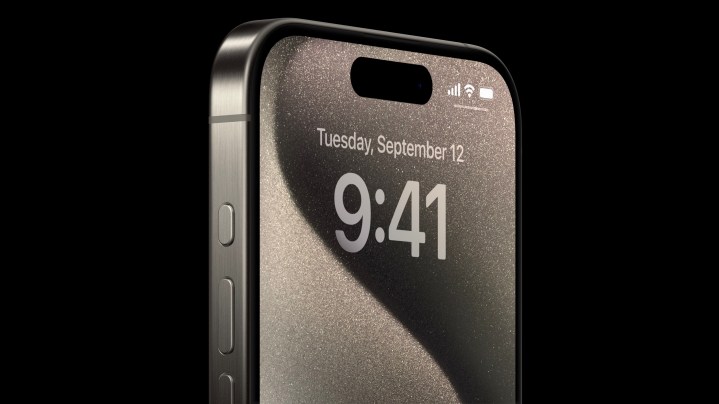
At first glance, the iPhone 15 Pro and iPhone 13 Pro may look similar, but there is a significant difference in their build materials. The iPhone 15 Pro is made from brushed titanium, whereas the iPhone 13 Pro is made from stainless steel. This change means that the iPhone 15 Pro now has subtle rounded edges, making it more comfortable to hold. Additionally, the switch to titanium has reduced the phone’s weight from 204 grams to 187 grams.
Although the newer model has had a few display upgrades, none are particularly significant. The iPhone 15 Pro and the iPhone 13 Pro boast a 6.1-inch Super Retina XDR display with a refresh rate of 120Hz, and they also maintain the same pixel density of 460 ppi. However, the iPhone 15 Pro does offer a slightly higher resolution of 2556 x 1179 pixels at 460 ppi, compared to the iPhone 13 Pro’s 2532 x 1170 pixels.
The most notable change in the display department is the iPhone 15 Pro’s peak outdoor brightness, which can reach 2,000 nits, while the older model maxes out at 1,200 nits. Both models still feature the incredibly tough ceramic front, which Apple claims is more durable than any smartphone glass.
iPhone 15 Pro vs. iPhone 13 Pro: performance and battery
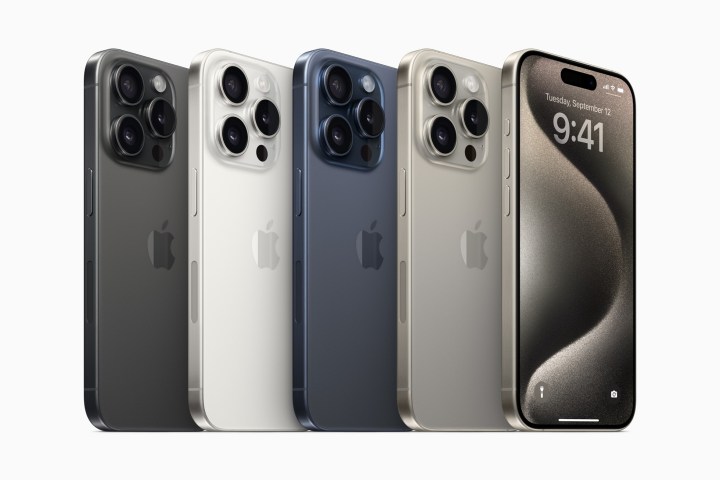
Today’s iPhones should last at least a day between battery charges. Unfortunately, this isn’t the case with iPhone Pro models. By contrast, the last three iPhone Pro Max models have offered up to 29 hours (iPhone 15 Pro Max) between charges. However, a modest change has been made between the iPhone 13 Pro and iPhone 15 Pro. The older model promises 22 hours of video playback versus the 23 hours for the iPhone 15 Pro (and iPhone 14 Pro). Both provide 75 hours of audio playback.
The charging speeds remain unchanged between the 2021 and 2023 iPhone models. With a 20W adapter or higher, a 50% charge can be obtained in 30 minutes. Both models support MagSafe and Q1 wireless charging, while the iPhone 15 Pro, upon certification, will also support the new Qi2 wireless charging standard.
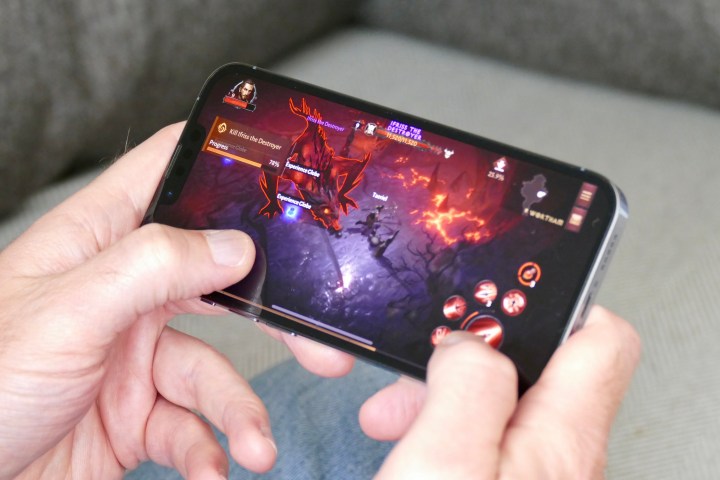
Apple deserves praise for the significant changes made to its A17 Pro chip, not just from the previous year’s model but also from the iPhone 14 Pro series. The A17 Pro silicon, built through the 3nm fabrication process, is a highlight of the iPhone 15 Pro series. The A15 Bionic, used in the iPhone 13 Pro series, was crafted using the 5nm fabrication process, and the iPhone 14 Pro series’ A16 was also built on a 4nm design. While the newer model features the same number of CPU cores as its predecessors, changes have been made on the GPU front.
For the first time, the A17 Pro introduces a 6-core GPU, which adds efficiency and slightly improves battery life on the iPhone 15 Pro. In practical terms, this means that the phone can handle demanding games better than ever before — even console-quality ones like Assassin’s Creed Mirage and Resident Evil Vilage.
iPhone 15 Pro vs. iPhone 13 Pro: cameras

Apple consistently enhances the camera systems in its iPhone Pro models, with some changes more significant than others. For instance, the differences between the iPhone 15 Pro and iPhone 14 Pro were not particularly noticeable on the hardware front. However, if you own an iPhone 13 Pro, you will appreciate the unmistakable improvements. This year’s model has a 48-megapixel primary camera, a 12MP ultrawide camera, and a 12MP telephoto that can output up to 3x optical zoom. In contrast, the older iPhone 13 Pro has 12MP cameras across the board (main, ultrawide, and telephoto).
The iPhone 13 Pro and the iPhone 15 Pro can capture videos of up to 4K 60 fps and Dolby Vision HDR. The newer model offers ProRes videos up to 4K at 60 fps, while the iPhone 13 Pro offers ProRes videos up to 4K at 30 fps. (If you have an iPhone 13 Pro with 128GB, you are limited to ProRes videos of 1080p at 30 fps.) Both models have a 12MP True Depth front camera, which can record HDR video with Dolby Vision up to 4K at 60 fps. However, only the iPhone 15 Pro’s front-facing camera has autofocus.
While the hardware changes between the iPhone 13 Pro and the iPhone 15 Pro are modest, the software improvements are noteworthy. Thanks to A17 Pro silicon, the iPhone 15 Pro has Smart HDR 5, which offers better control over dynamic range and contrast than the older phone’s Smart HDR 4.

Apple has made some exciting enhancements to the portrait photography feature on its latest phone. You can now capture a bokeh shot without switching to the official Portrait mode in the Camera app. Additionally, regular photos can be turned into portraits after being taken, and the focus point can be adjusted. Moreover, the phone features next-generation portraits that combine Deep Fusion, Photonic Engine, and Smart HDR 5 algorithms. The night mode has also been improved with the Photonic Engine and LiDAR sensor, which provide better sharpness and a wider color range in low-light shots.
On the video side, the iPhone 15 Pro now enables you to record ProRes 4K 60 fps videos directly on an external storage device. Log encoding has been added, which preserves the color gamut while expanding the dynamic range and improving after-processing editing. The new phone also supports the Academy Color Encoding System, an open color encoding standard developed by the Academy of Motion Picture Arts and Sciences.
iPhone 15 Pro vs. iPhone 13 Pro: software and special features
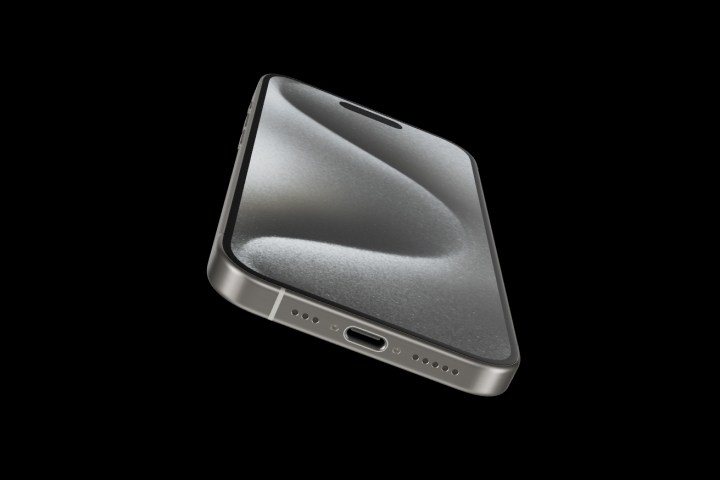
Looking back at the iPhone 15 series, it will be remembered as the first to replace the Lightning port with a USB-C port. This decision, which Apple didn’t solely make, is significant not just because it reduces the number of cords needed at home but also because the new USB-C port supports the USB 3.0 standard — enabling transfer speeds of up to 10Gbps, which is 20 times faster than the Lightning port found on the iPhone 13 Pro. Additionally, with USB-C, the iPhone 15 Pro can be used as a power bank to charge accessories such as AirPods and Apple Watch.
The iPhone 15 Pro comes with another new feature: the Action button. It replaces the Ring/Silent switch previously located on the side of the device. The Action button is similar to the one on the Apple Watch Ultra series, allowing you to access some of your favorite features quickly. To launch your action, press and hold the button.
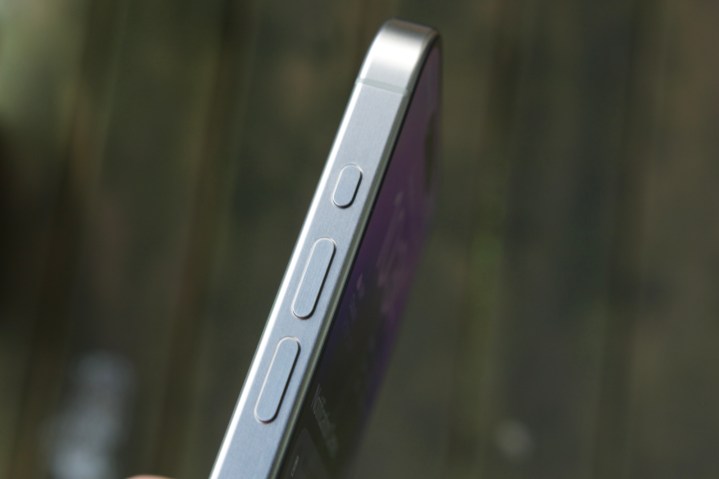
The new iPhone also features a second-generation U2 Ultra Wideband (UWB) chip that increases the connection range between two iPhones, improving the Find My ecosystem and the new Precision Finding feature. Furthermore, with Wi-Fi 6E, wireless data speeds can be doubled, provided the equipment supports it. The iPhone 15 Pro is also the first Apple phone to support NavIC, an independent standalone navigation satellite system developed by Indian Space Research, enabling better navigation and location services.
Smart home users can benefit from the Thread support that comes with the iPhone 15 series. This open-source protocol allows all smart home devices to communicate with each other, regardless of brand or operating system preferences.
Both the iPhone 15 Pro and iPhone 13 Pro support iOS 17. The former comes with the update preinstalled. Several new features are packed inside iOS 17, including Live Voicemail, Messages improvements, a new StandBy feature, and more.
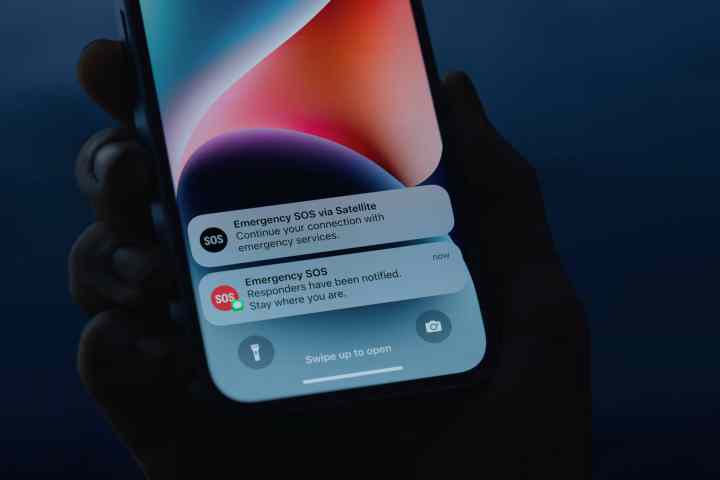
Apple has made significant strides in product safety features in recent years. Emergency SOS has been a staple feature on Apple handsets for some time now, making it effortless to call for emergency services when needed. With the release of the iPhone 14 series last year, Apple also introduced Crash Detection. Beginning with iOS 17, the iPhone 14 and iPhone 15 series also include a new Roadside Assistance feature.
Crash Detection is a feature exclusive to the iPhone 14 and later models that can detect a severe car crash and automatically call for assistance through an active cellular connection or Wi-Fi calling. Roadside Assistance, also exclusive to the iPhone 14 and later models, allows you to text emergency services and share your location with family and friends through a satellite connection, even when you have no cellular or Wi-Fi coverage. AAA provides free roadside assistance to iPhone owners for two years, even if they don’t have AAA membership. Crash Detection nor Roadside Assistance via satellite is available on an iPhone 13 Pro.
iPhone 15 Pro vs. iPhone 13 Pro: price and availability
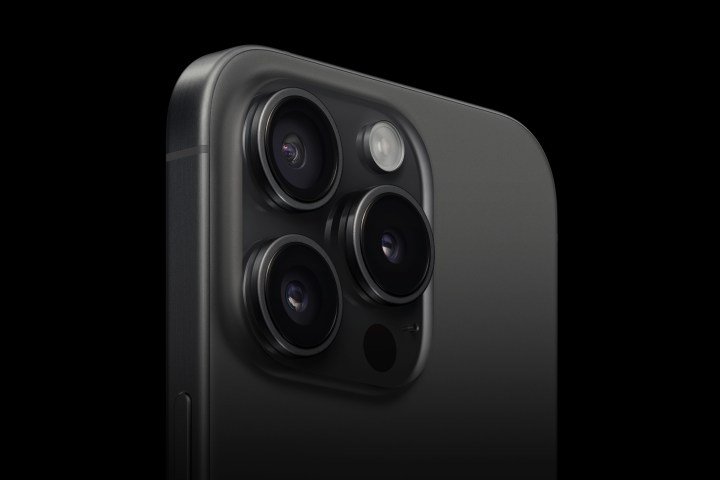
The latest iPhone, the iPhone 15 Pro, is now available for purchase. It comes in four colors: Natural Titanium, Blue Titanium, White Titanium, and Black Titanium. The base model starts at $999 and is available in four storage options: 128GB, 256GB, 512GB, or 1TB.
The iPhone 13 Pro, which Apple discontinued in September 2022, is still available for purchase through third-party vendors, often at discounted prices. Like the iPhone 15 Pro, it also had a base price of $999 for a 128GB model, with options for 256GB, 512GB, and 1TB of storage. The iPhone 13 Pro was made of stainless steel and was available in five colors: Alpine Green, Silver, Gold, Graphite, and Sierra Blue.
iPhone 15 Pro vs. iPhone 13 Pro: should you upgrade?
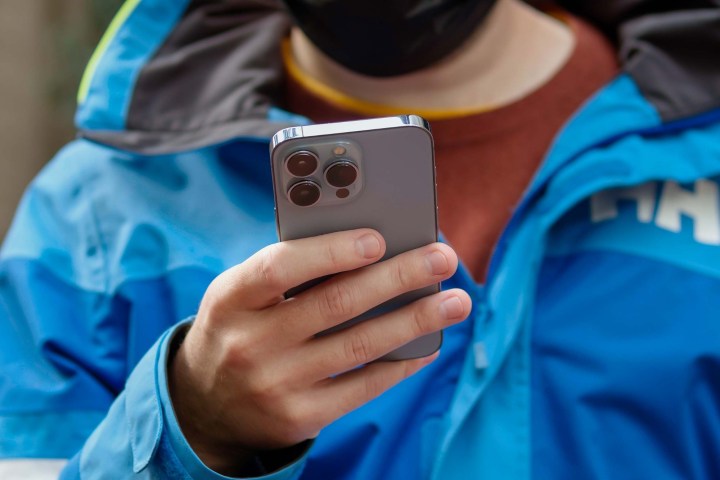
If you were thinking about upgrading from a very good iPhone 14 Pro to an iPhone 15 Pro, we would suggest that you hold off on the upgrade for now. However, if you are considering upgrading from the iPhone 13 Pro, it’s worth looking closer. The A17 Pro chip, new camera features, and the replacement of stainless steel with titanium make upgrading a viable option this time.
If you need another reason, consider the introduction of a USB-C port. This change eliminates cords and leads to faster data transfer speeds and improved workflows for professionals.
That said, it’s worth noting that the iPhone 13 Pro is still an excellent device, even after being on the market for over two years. It has a comparable battery life to the iPhone 15 Pro and a great camera system. Therefore, if you are happy with your current Lightning connection, it might be wise to wait until next year before upgrading.
Editors’ Recommendations
